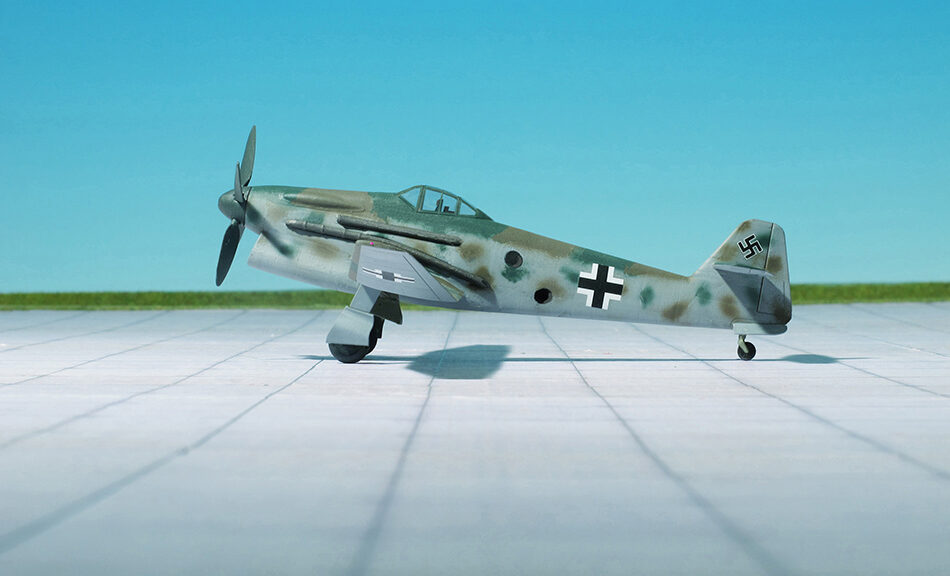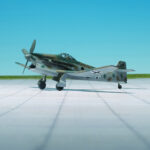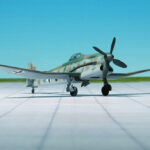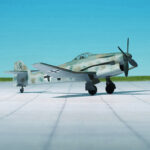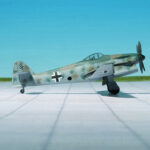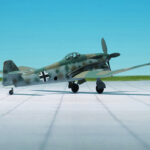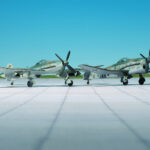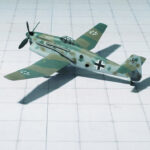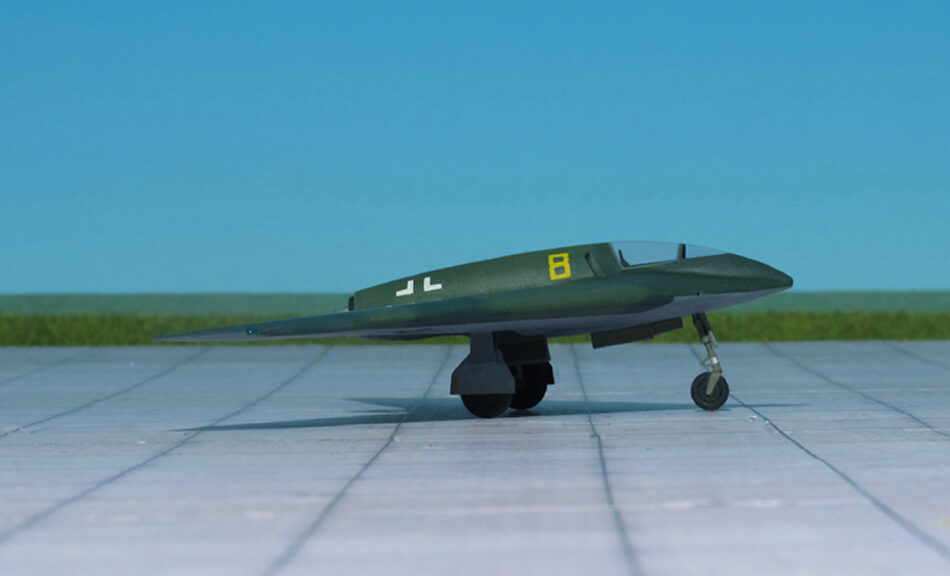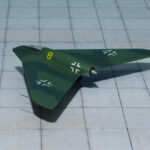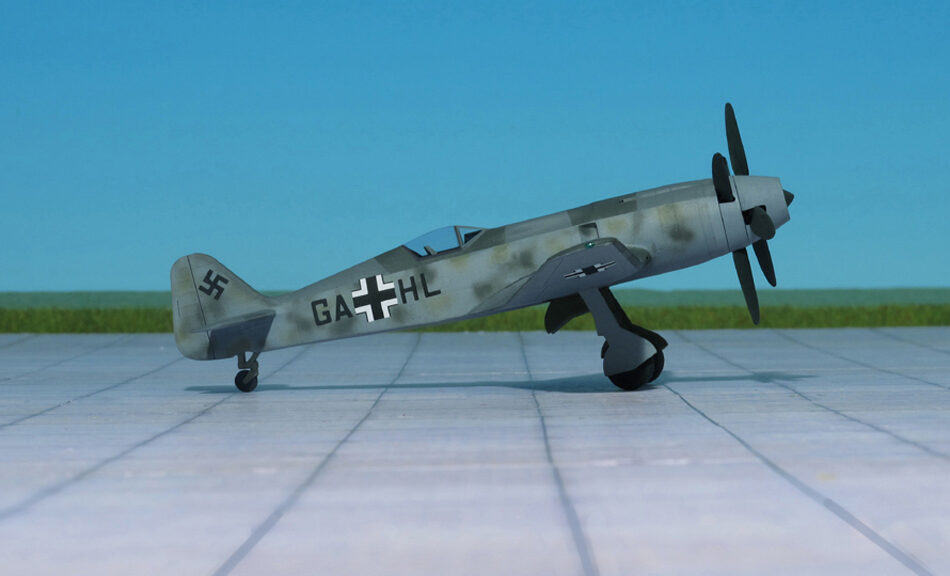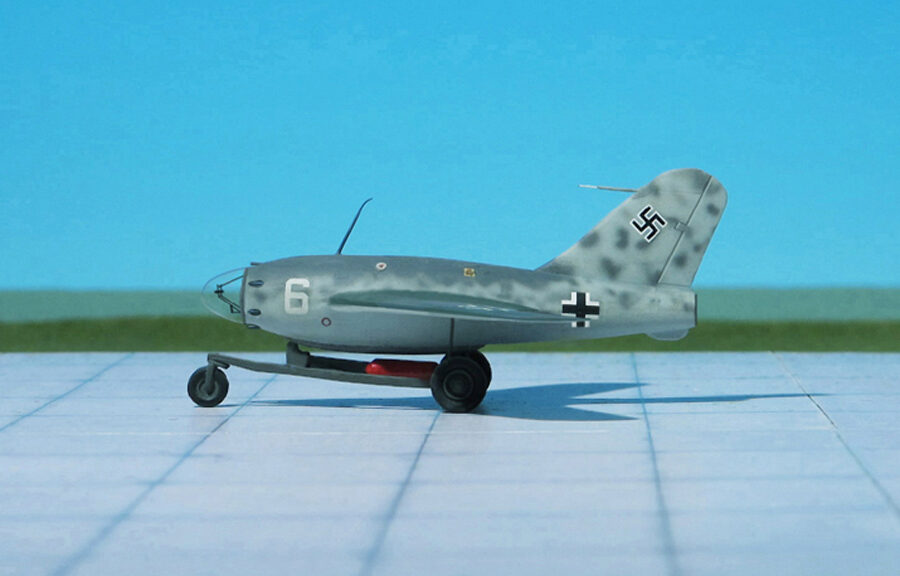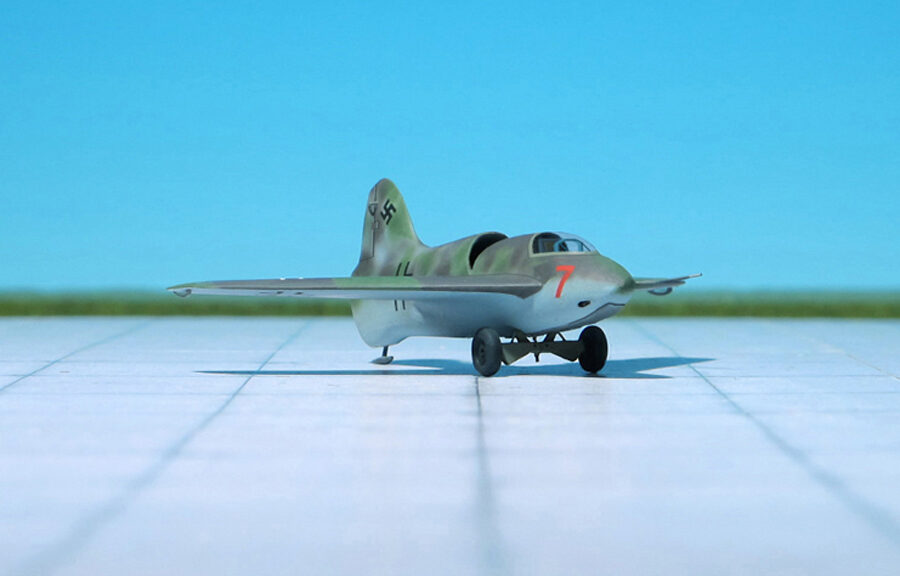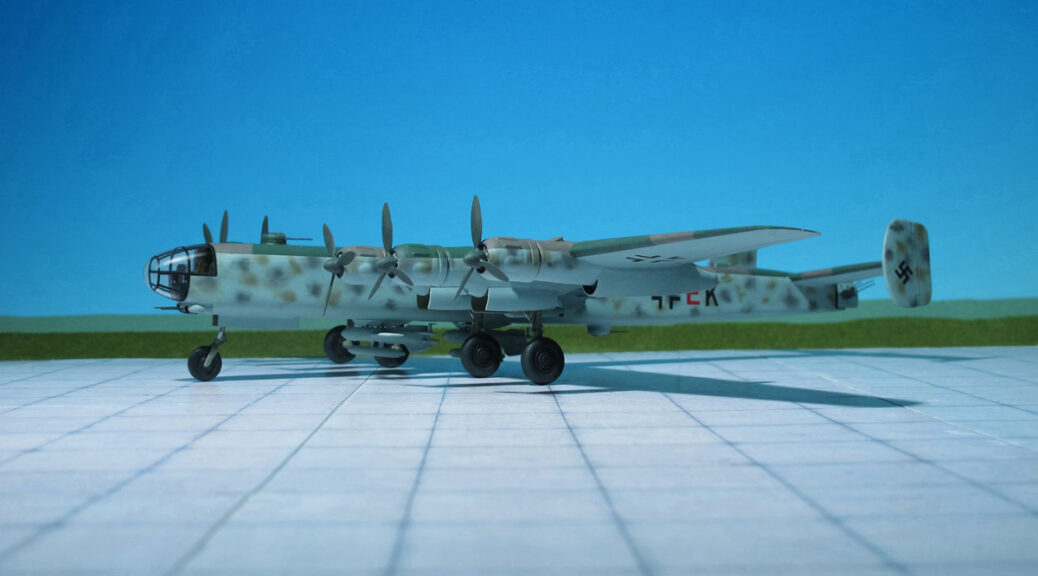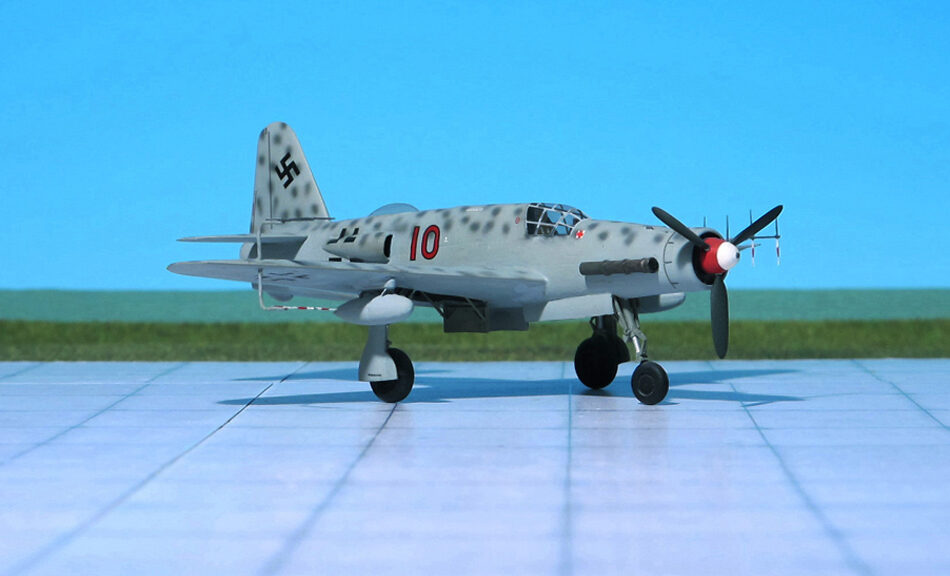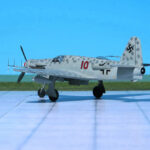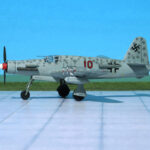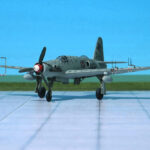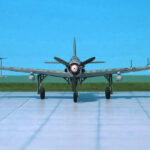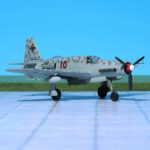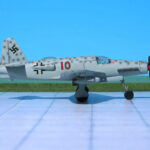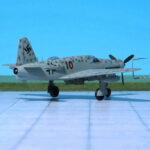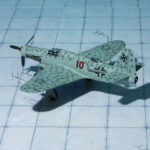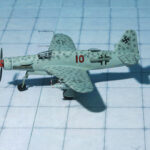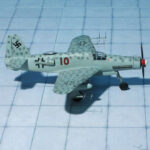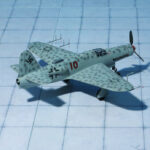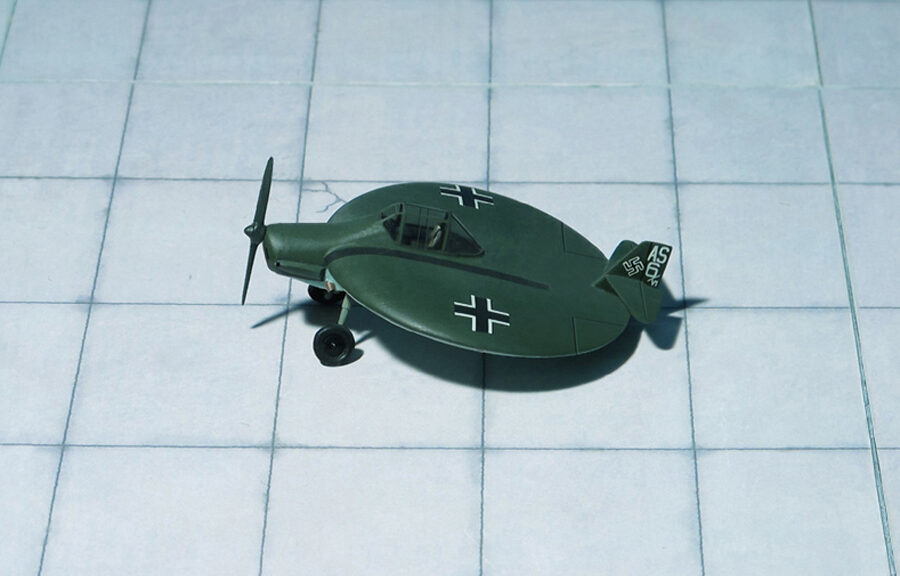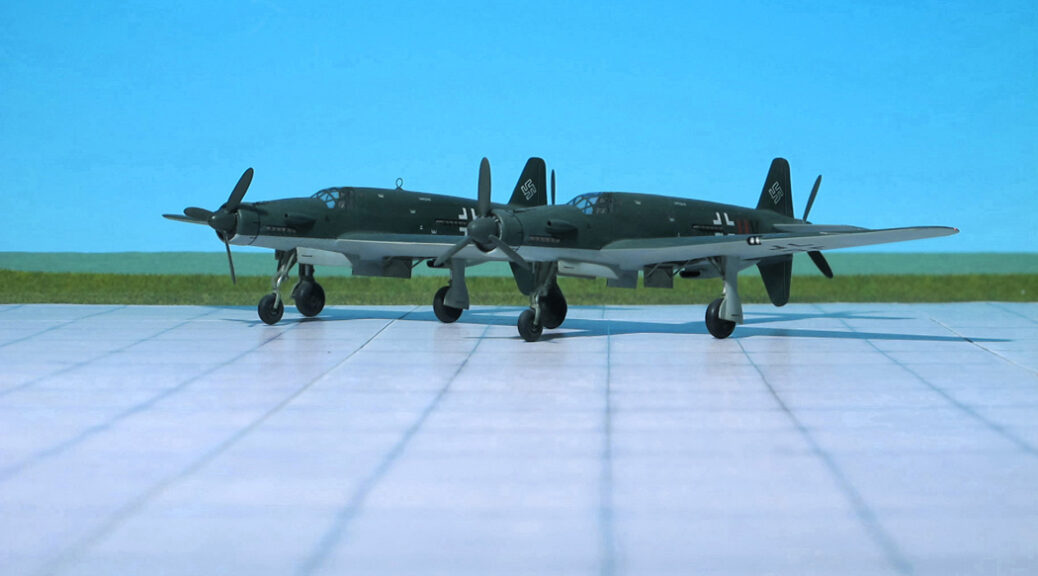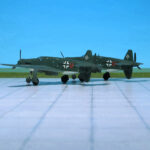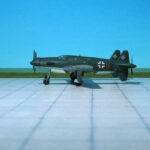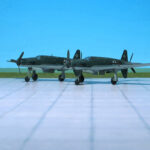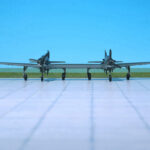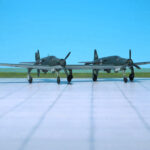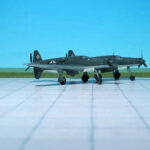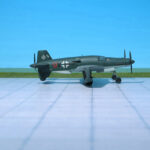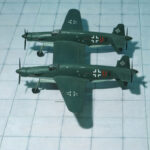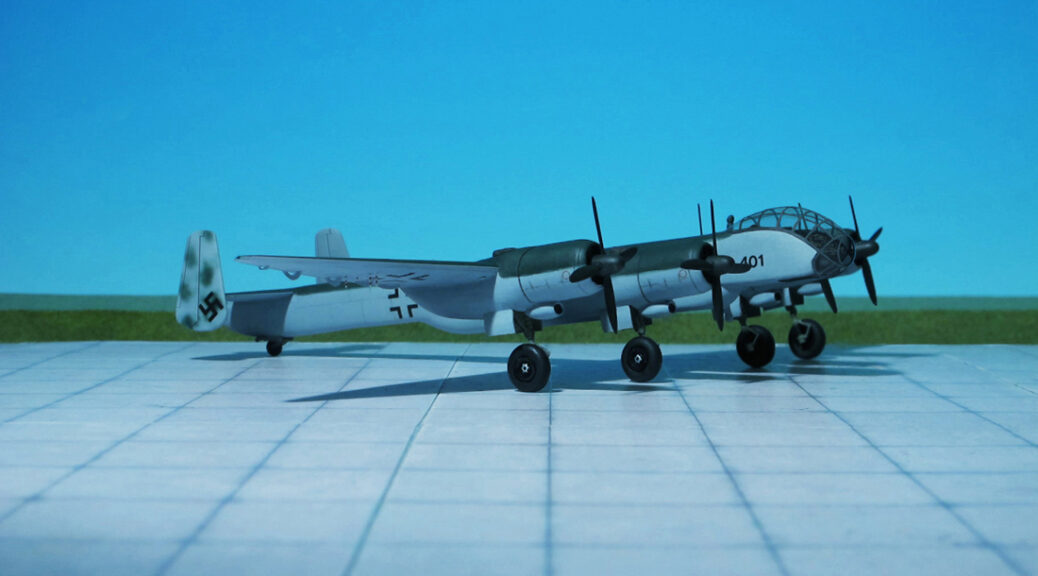TYPE: High altitude interceptor
ACCOMMODATION: Pilot only
POWER PLANT: One Daimler-Benz DB 603U liquid-cooled engine with Hirth TJ KL 15 turbo-charger, rated at 1,430 hp at 49,000 ft.
PERFORMANCE: 690 km/h (429 mph) at 16,000 m (52,000 ft)
COMMENT: The Blohm & Voss Bv 155 was a German high-altitude interceptor aircraft intended to be used by the Luftwaffe against increasing numbers of high-altitude bomber raids of the Allies.
Performance estimates of the American Boeing B-29 Superfortress became acquainted with the RLM (Reichs Luftfahrtministerium, Reich’s Air Ministry). The bomber would cruise at an altitude at which no current German plane could operate effectively. To intercept it, the Luftwaffe would urgently need new aircraft.
Perhaps the most bizarre piston-engined fighter to be flown in Germany during the life of the Third Reich was the ungainly Blohm & Voss Bv 155 high-altitude interceptor, with its inordinate wing span and, in its Bv 155B-series, uniquely situated coolant radiators. The development history of this warplane was nowise less curious than its appearance, for it commences its career not on the drawing boards of Blohm & Voss’s design team, but in the project office of Ing. Dr. W. Vogt of the Messerschmitt AG at Augsburg. Furthermore, its type number has bee previously applied to a single-seat shipboard fighter, being resurrected when the RLM’s Technische Amt conceived a requirement for what was, by the standards of the day, an ultra-high-altitude interceptor.
Work on a high altitude fighter was originally begun by Messerschmitt in spring 1942 as a follower of the carrier-based fighter Messerschmitt Me 109T (T for Träger, Carrier) under the designation Messerschmitt Me 155. In 1943 the project was passed to Blohm & Voss and an order for five prototypes was placed. Blohm & Voss accepted the order only on condition they had complete design freedom and were not bound by Messerschmitt’s work to date. The redesign was named the Bv 155.
Work on the prototype began on early 1944. Power was provided by a Daimler-Benz DB 603A engine with a TKL 15 turbo-supercharger offering an output of 1,450 hp at 49,210 ft, driving a four-bladed wooden airscrew. MW 50 injection was provided as well as a pressurized cockpit. Overwing radiators were mounted and a new laminar flow wing had span of 67ft. 3in.
The prototype Blohm & Voss Bv 155 V1 made ist initial flight on September 1944. Flight tests showed that the outboard radiators provided inadequate cooling, especially at high angle of attack. The intakes on the next prototype were enlarged and underslung beneath the wing rather than placed over it. However, the enlarged radiators changed the aircraft’s center of gravity which required moving the pressurized cockpit forward. The Blohm & Voss team took this opportunity to replace the original Messerschmitt Bf 109G canopy with an aft-sliding all-round vision canopy, and the rear fuselage decking was cut down. This in turn required that a larger rudder be fitted. The ventral radiator bath was also enlarged.
With these changes, the Bv 155 V2 flew on 8 February 1945. Blohm & Voss was still not satisfied with the design, and before the Bv 155 V2 began its flight trials they proposed that the engine be switched to the DB 603U having the larger mechanically driven supercharger of the DB 603E. The DB 603U promised a power of 1,660 hp for takeoff and 1,430 hp at 49,000 ft. The ventral turbosupercharger was retained. The Technische Amt decided to accept this proposal, and abandoned all work on the Bv 155B in favor of the revised design, which was designated Bv 155C.
The Bv 155 V2 was damaged beyond repair during a bad landing. It was to be replaced in the test program by the Bv 155 V3. The Bv 155 V3 differed from the V2 in having the DB 603U intended for the Bv 155C. However, the engine cowling and turbosupercharger were unchanged.
In parallel with the prototype development, Blohm & Voss had been working on additional changes under Project Blohm & Voss Bv.P205. P.205 replaced the underwing radiators with an annular one around the front of the engine, a design feature commonly found on a number of German designs (Focke-Wulf Ta 152H). With the wings now free of clutter, they were considerably simpler and were reduced in span. This also had the side effect of reducing the track, which would later prove to be a welcome change. The new design would be simpler, lighter and faster, and plans were made to make it the standard version of the aircraft. During the October re-evaluation, it was agreed that Bv 155V1 and V2 would be completed as Bv 155B models, while the V3 would be the prototype for the Bv 155C. This design was to be significantly different in appearance from the Bv 155B. Based on the Bv 155B and experiences with the high-altitude fighter project Blohm & Voss P 205, the Bv 155C was developed. In this version, the radiators were mounted under the engine, and the wings were aerodynamically streamlined, resulting in a completely altered appearance. Before the end of the war, only a mock-up was completed (Ref.: 7, 24, My3dbase Model).
